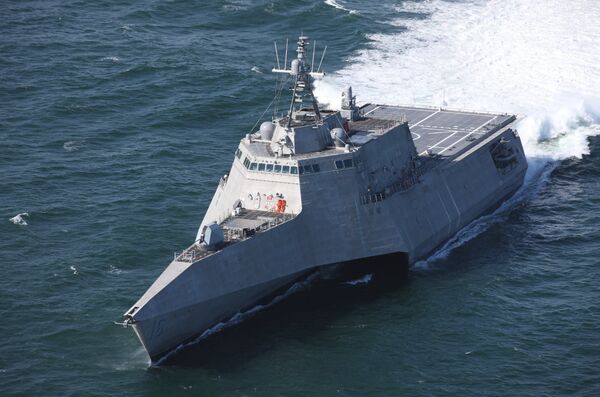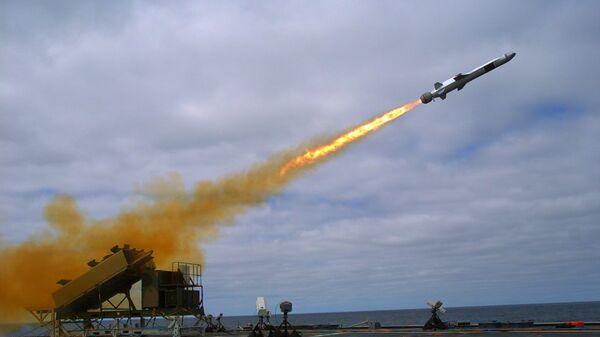The USS Gabrielle Giffords, an Independence-class vessel, departed San Diego on the US West Coast on Tuesday, heading for the Indo-Pacific region, Pacific Fleet spokesperson Capt. John Gay confirmed. The ship is carrying a new long-range anti-ship missile acquired by the Navy to compete with China’s dominance in that sphere.
The Independence-class vessels weren’t designed to be missile platforms; the trimaran-style ship, barely displacing 3,000 tons of seawater, is meant to be a fast, maneuverable patrol boat protecting the littoral region - hence its original name, the littoral combat ship. However, the US Navy has repurposed the ships as missile platforms, giving them the new designation of “fast frigate” - a class of ship not used by the Navy since it decommissioned the last of the Cold War-era Oliver Hazard Perry-class ships in 2015.

For the newly minted warships, the Navy set out to acquire the Naval Strike Missile from Norwegian defense firm Kongsberg Defense Systems, which produced the weapon jointly with US missile maker Raytheon, as early as 2014. The new weapon extends the range at which it could strike enemy vessels by more than 30 miles. Without the NSM, the service’s longest reach is provided by the RGM-84 Harpoon, with a range of roughly 67 miles.
The People’s Liberation Army Rocket Force (PLARF) and Navy (PLAN) have outpaced the US military in terms of missile capabilities, especially anti-ship missiles. The YJ-12 anti-ship missile has a range of 250 miles, and the YJ-18 can reach out and touch an enemy ship at 335 miles’ distance, Sputnik reported.
“That is a very big gap," Robert Haddick, a visiting senior fellow at the Mitchell Institute for Aerospace Studies and adviser to the US Special Operations Command, told Reuters in April.
For perspective, the South China Sea is only 725 miles wide at its narrowest point, between Vietnam and the Philippines, and the East China Sea is only 485 miles wide, from Shanghai to Japan’s Kagoshima Prefecture.
“It’s great that the Navy is doing these improvements, but it’s very incremental,” Bryan Clark, a retired submarine officer and analyst with the Center for Strategic and Budgetary Assessments, told Defense News. "It has been a decade since the Navy said: ‘Hey, we need to start an unmanned aircraft program of some kind, and we need put better anti-ship missiles on our ships.’”
According to Defense News, the NSM is very precise, able to strike the desired part of a targeted ship, and is made out of advanced composite materials that give it a “stealth” quality. It can also navigate around obstacles and is programmed to make random maneuvers in the moments just before it strikes its target, in order to frustrate enemy point defense systems.
The Giffords is also carrying the MQ-8C Fire Scout, a helicopter drone used for over-the-horizon surveillance, as well as a targeting aid that entered active service in June. Drones like the Fire Scout and MQ-25 Stingray have helped the Navy to compensate for its shorter missile ranges by spotting for the projectiles from a higher vantage point.

